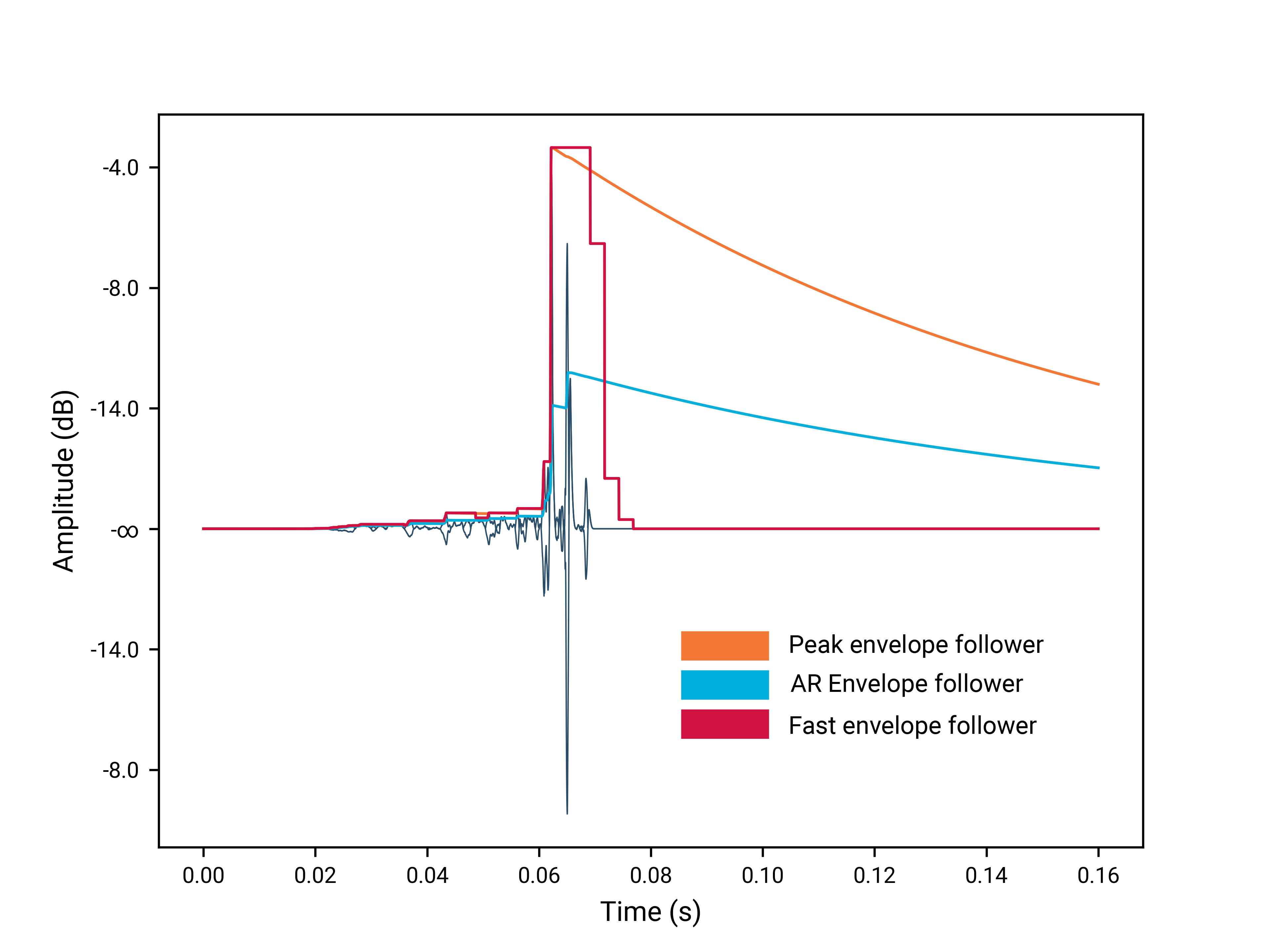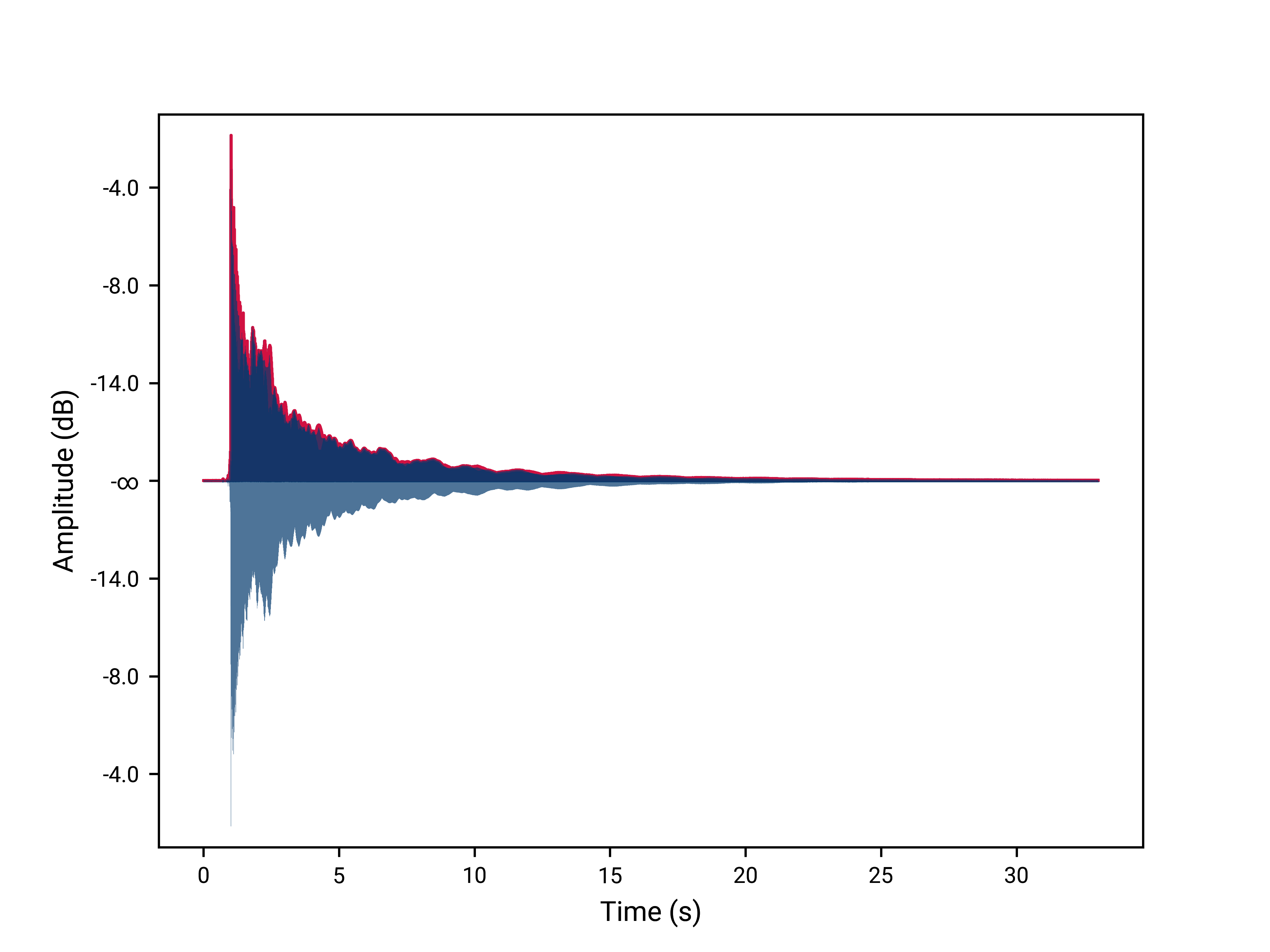Fast Envelope Follower
Overview
The Fast Envelope Follower is the software implementation of a unique envelope detector that feature fast response and low ripple. It is based on the hardware article titled Envelope Follower Combines Fast Response, Low Ripple by Harry Bissell Jr.
See Figure 1 below. Basically, the result of the fast envelope follower is the maximum of N peak values taken simultaneously. Each value is the maximum of the current sample and the latest held peak value. Each of the peak values are reset to zero in a round-robin fashion. As a peak value is reset, the other peak values still hold the latest peak value. The highest peak among N peaks is then chosen as the current output.
Response
The plot in Figure 2 below shows the fast envelope follower’s response. As compared to the Peak Envelope Follower and AR Envelope Follower, the fast envelope follower’s superior performance is immediately apparent in the plot. Of course, this comes at the cost of additional computing complexity.
The reset cycle time is specified by the hold duration parameter. The number of peak values is specified by the div parameter. The plot was obtained by picking the guitar’s low-E string and using a hold duration of approximately 6 ms and with a div of 2 (envelope: red, signal: blue, absolute value of the signal: dark blue). See below for more information on the hold and div parameters.
It is worth noting that we use the absolute value of the signal to capture both the positive and negative sides of the waveform, as indicated by the dark blue plot. The fast envelope follower does not perform this operation automatically, allowing you to perform any necessary preprocessing before computing the envelope. This flexibility enables you, for example, to capture only the positive or negative peaks, or perhaps the square of the signal, depending on your application needs.
Staircase Output
The output is a jagged, staircase-like envelope that tightly follows the input, including fast attacks and decays. Figure 3 below (envelope: red, signal: blue, absolute value of the signal: dark blue) is a closer view of Figure 2 above:
The output is suitable for signal analysis as is. If the signal is to be utilized for modulation, for example as input to a Compressor, further filtering is recommended. Fast Averaging Envelope Follower is one such example.
Transient Response
Figure 4 demonstrates in closer detail the transient response of various envelope detectors, demonstrating how the fast envelope follower’s response closely follows the true envelope of the signal compared to the Peak Envelope Follower and AR Envelope Follower, both of which perform poorly on signal decays.

Declaration
template <std::size_t div>
struct basic_fast_envelope_follower
{
static_assert(div >= 1, "div must be >= 1");
basic_fast_envelope_follower(duration hold, float sps);
float operator()(float s);
float operator()() const;
};
using fast_envelope_follower = basic_fast_envelope_follower<2>;basic_fast_envelope_follower is a template class parameterized by div, which must be >= 1. div specifies the minimum duration required for the hold parameter. The hold duration should be equal to or slightly longer than 1/div multiplied by the period of the lowest frequency of the signal we wish to track. For example, if the lowest frequency we wish to track is 440 Hz, and div = 2, then the hold parameter should be greater than 1.13 ms.
fast_envelope_follower is an alias for basic_fast_envelope_follower<2>. In general, this is all you need to use, unless you want finer granularity. The higher the div is, the finer the granularity possible. Again, all of these comes at the cost of additional computing complexity.
Expressions
Notation
env_t-
A
basic_fast_envelope_follower<div>type. env,a,b-
Objects of type
basic_fast_envelope_follower<div> hold-
Object of type
duration sps-
Floating point value for samples per second.
s-
Floating point value for the latest input sample.
Constructors and Assignment
| Expression | Semantics |
|---|---|
|
Construct a |
|
Copy construct from |
|
Assign |
env_t is just a shortcut notation for any type or alias to a template instantiation of basic_fast_envelope_follower<div>. Example:
using my_env_t = basic_fast_envelope_follower<4>;| C++ brace initialization may also be used. |

